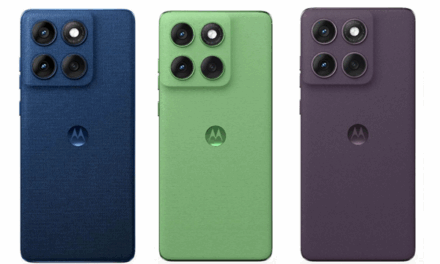
From RGB to AI: How Emerging Tech Is Changing the Way We Game

From the hypnotic glow of customizable RGB setups to the silent power of AI-driven game engines, the world of gaming is evolving faster than ever before. What was once a niche hobby for a small group of enthusiasts has now become a mainstream cultural and technological force—and emerging tech is fueling that transformation in exciting and unexpected ways.
Gamers today expect more than just high frame rates and responsive controls. We crave immersion, customization, and smarter systems that learn and adapt with us. In this article, we explore how some of the most innovative technologies—from RGB lighting ecosystems to artificial intelligence—are changing the way we play, compete, and connect in the gaming world.
RGB: Beyond Aesthetics
Let’s be honest—RGB lighting might have started as a flashy marketing gimmick. But it has since grown into a fully-fledged feature set that enhances gaming experiences in both subtle and substantial ways.
Today’s RGB-enabled peripherals and components aren’t just about looking cool. Platforms like Razer Chroma, Corsair iCUE, and ASUS Aura Sync allow gamers to customize lighting schemes that respond to in-game events. Taking damage? Your keyboard might flash red. Reaching a new level? Your PC case could pulse with celebratory color.
RGB lighting has also become a powerful tool for accessibility. Color-coded lighting feedback helps players with visual or auditory impairments navigate games more effectively, and programmable zones offer tactile learning tools for complex control layouts.
And let’s not overlook the mood-enhancing aspect. Syncing ambient lighting with gameplay or music can deepen immersion and turn any room into a cinematic battlestation. Whether it’s subtle underglow or full-blown rainbow waves, RGB has become a personal, expressive extension of how we experience games.
AI: Powering Smarter Games and Gear
Artificial Intelligence is quickly becoming one of the most transformative forces in modern gaming. While AI-controlled enemies have long been part of the experience, today’s advancements are pushing the envelope well beyond predictable NPCs.
Game developers are now using machine learning to create adaptive enemies that learn your playstyle and evolve their tactics accordingly. Instead of memorizing patterns, players must think strategically and stay agile—bringing new depth to even the most casual titles.
AI also powers smarter matchmaking systems, optimizing online experiences by pairing players with similar skill levels or gameplay styles. The result? Fairer, more competitive sessions and reduced frustration—especially for new players entering the scene.
But AI isn’t limited to in-game logic. It’s also improving the tools we use. Take AI-powered voice assistants in gaming headsets, or cooling systems that adapt fan speeds based on predicted workloads. Even personalized game coaching is emerging, with AI analyzing replays and offering tips on how to improve.
In short, AI is quietly working behind the scenes to make gaming smoother, smarter, and more satisfying than ever.
Immersion and Integration: The Future of Gaming Environments
Gaming is no longer confined to the monitor. Thanks to emerging tech, the entire room can become part of the experience.
Virtual reality (VR) and augmented reality (AR) are making big strides, especially as hardware becomes more affordable and less bulky. Devices like the Meta Quest and PlayStation VR2 are breaking new ground in accessibility, bringing lifelike immersion to casual gamers and hardcore enthusiasts alike.
Haptic feedback is also stepping into the spotlight. From controllers with adaptive triggers to haptic vests that simulate impact and movement, touch is becoming an integral part of play. The physical feedback bridges the gap between the digital world and real life, pulling players deeper into the game’s universe.
And then there’s smart home integration. Lighting, sound systems, and even thermostats are being synced with gameplay—imagine your room going icy blue during a snowstorm level, or heating up during a volcanic boss fight. This kind of deep integration is no longer just a cool concept; it’s becoming a reality for gamers who want total immersion.
These innovations are not just enhancing gameplay—they’re creating entirely new ways to engage, interact, and enjoy. And platforms offering real-time reward systems like QuickWin are beginning to gamify even these tech integrations, making the boundary between hardware and software more exciting than ever.
Conclusion: The Game Has Only Just Begun
Gaming has always been about evolution—from 8-bit graphics to ray-traced realism. But today’s changes go beyond visuals and into the core mechanics of how we play and what we expect from our gear.
RGB lighting lets us personalize our play. AI makes games more responsive and intelligent. And immersive environments blur the lines between real and virtual. Together, these technologies are redefining what it means to be a gamer in the 21st century.
As emerging tech continues to shape the gaming landscape, one thing is clear: the future of gaming isn’t just about playing—it’s about experiencing. And that experience is only getting better.


























